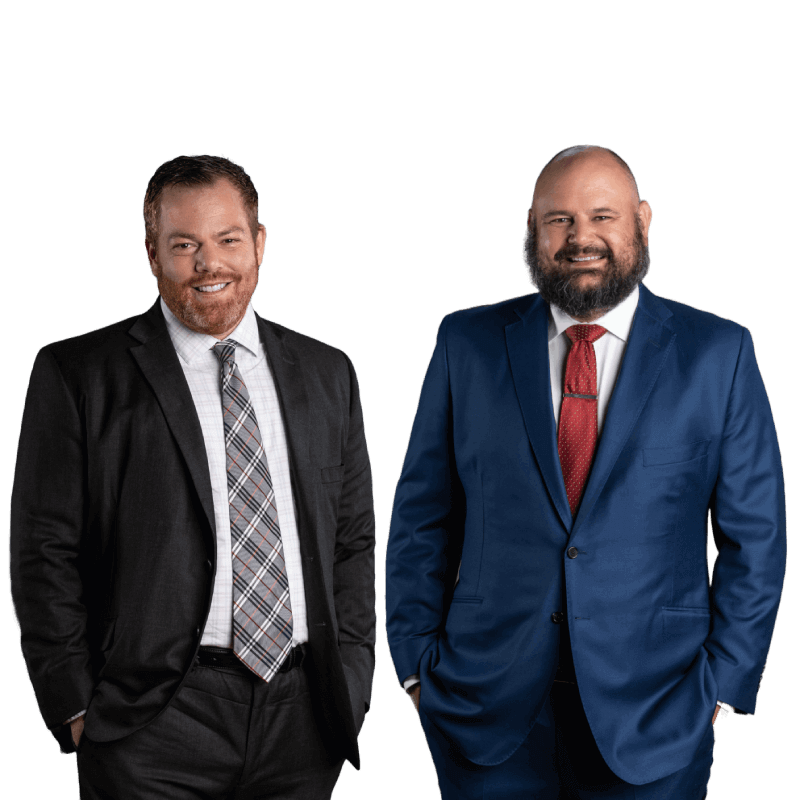Each day in the U.S., many vehicles travels on public roadways, including various buses. In addition to hundreds of thousands of school buses, there are intercity and transit buses. Most of these vehicles are common carriers, meaning they transport passengers on regular routes for a set rate.
Unfortunately, there are thousands of accidents involving buses each year, often resulting in serious injuries or even deaths of passengers, bus drivers, and the occupants of other vehicles.
If you have suffered injuries due to the negligence of a bus driver or another driver on a public roadway, seeking the assistance of a bus accident lawyer can help you obtain compensation for the expenses and impacts of your injuries. This post provides an overview of the types of compensation you can receive for a bus accident and the importance of seeking legal assistance to ensure that you receive fair compensation for your injuries and other damages.”
About Bus Accidents in the U.S.

Carriers Who Provide Commercial Bus Services Owe a Higher Duty of Care
Buses are massive vehicles, often featuring the following dimensions:
- School buses: The average length of a full-size school bus is at least 35 feet, with the capacity to seat up to 90 people. The bus is generally eight to nine feet wide.
- Intercity buses, such as those offered by Greyhound: Coach buses are typically around 39’4” long, 8’4” wide, and can seat 44 to 49 people.
- Transit buses used to provide public transportation for municipal transportation authorities (city buses): Generally have a length of 39’2”, a width of 8’4”, and a capacity to seat 29 people with standing room for 76.
The size of a bus affects its maneuverability, causing hazards such as the need for wide turns, an increased risk of overturning due to the vehicle’s high center of gravity, and significant blind spots on all four sides of the vehicle. Because of these hazards and the fact that these vehicles are designed to transport members of the public for a fee, common carriers owe a higher duty of care than other motor vehicle types on the roadway.
What Is a Common Carrier’s Duty of Care?
All drivers owe a duty of care to other roadway users to take reasonable actions to avoid causing harm to others. For drivers operating their vehicles on the roadway, this duty generally involves ensuring that their vehicle is adequately insured, maintained, and traveled according to local and state traffic laws.
Common carriers and the drivers they employ are held to increased requirements due to the vehicle’s size and the use of it in transporting members of the public for a fee. One of the provisions of this increased duty of care is that operators of buses that carry more than 16 passengers or have a gross weight of more than 26,000 pounds must obtain a special license called a commercial driver’s license (CDL).
The CDL not only requires the driver to take additional training to obtain the license but imposes other requirements, such as:
- Regular physical health screenings to ensure that the driver can operate a large vehicle, as well as submission to regular and random drug and alcohol screenings.
- A reduced legal impairment limit. While most adult drivers over 21 in the U.S. are permitted to operate a vehicle after drinking alcohol up to an impairment limit of 0.08 grams of alcohol per deciliter of blood (g/dL), drivers with a CDL are subject to an impairment limit of 0.04 g/dL.
- The requirement is that the driver inspects the bus before each trip to ensure that it is in good, running order and that no known hazards would harm passengers or members of the public.
- Increased hiring requirements. Common carriers must ensure that the drivers they hire to operate their buses are qualified for the job by checking their criminal and driving history and keeping a copy of their CDL on file.
Increased Insurance Requirements
In addition to the requirements listed above for common carriers who transport people or goods, carriers are also subject to increased insurance requirements to pay for the expenses incurred by passengers or the occupants of other vehicles after an accident caused at least in part by the driver’s negligence.
Buses designed to carry 16 or more passengers must carry at least $5 million in liability insurance. Many cities, states, and school districts require more than this minimum.
Like other types of auto liability insurance, bus insurance covers:
- The expenses and impacts of bodily injuries sustained by passengers and the occupants of other vehicles resulting from an accident in which the common carrier had liability. Liability (legal responsibility) can occur due to the bus driver’s negligent actions such as speeding, distracted driving, fatigued driving, impaired driving, or other careless or reckless driving behaviors. The carrier can also bear liability for the harm caused to others if the driver failed to perform a pre-trip inspection before using the bus, the bus was improperly maintained, or someone who was not qualified to drive the vehicle operated it, such as a driver without a CDL or whose most recent physical health screening revealed medical issues that made it unsafe for them to drive.
- Bus liability insurance also covers property damage, such as personal belongings of passengers or the vehicle of another driver that the accident damaged.
The Type of Compensation You Can Get for a Bus Accident
If you’ve been injured in a bus accident caused by someone else’s negligence, you can seek compensation through a claim against the at-fault driver’s auto liability insurance policy. This could be a claim against the insurance policy carried on the bus. However, the bus driver isn’t the source of liability in all types of accidents. If another roadway user caused a collision involving a bus and resulted in injuries or property damage, you can claim that driver’s insurance policy.
In many cases, there is more than one source of liability for an accident. If you were injured in a bus accident that was a result of negligence by both the driver of the bus as well as the driver of another vehicle on the roadway, you can seek compensation through the insurance policies of the common carrier and the other driver.
Economic Damages
One of the types of compensation you can seek through a personal injury claim after a bus accident is reimbursement of monetary expenses you incurred as a result of the accident.
These are known as economic damages and include expenses such as:
- All reasonable expenses associated with medically treating your injuries, including the costs of emergency treatment at the scene and ambulance service, hospitalization, the services of physicians and surgeons, medical equipment used in the treatment, diagnostic testing (X-rays, MRIs, etc.), prescription medication, the provision of crutches or a wheelchair, physical therapy, and rehabilitation, as well as the expenses of long-term home health car or placement in a rehabilitation facility or nursing home.
- The income loss you incurred during the period you were too injured from the accident to work. Often, serious injuries resulting from a bus accident will produce permanent deficits impairing the injured party’s future earning capacity. In this type of claim, the claimant can seek recovery of future income that they will likely lose due to those permanent deficits.
- Property damage incurred in the accident, such as damage to other vehicles or personal belongings that passengers on the bus were carrying with them.
Non-Economic Damages
As anyone who has ever been in a serious motor vehicle accident can tell you, not all of the costs associated with their injury are monetary. Being injured in an accident also can profoundly impact the sufferer’s quality of life, and they can also seek compensation for these impacts.
This compensation is commonly called non-economic damages and includes:
- Physical pain and suffering as a result of the injuries and particularly painful treatments for the injury.
- Emotional distress, including trauma from the accident, and the more distressing events of recovering from those injuries, such as the requirement to attend frequent medical appointments and the disruption that treatment causes to the injured party’s normal daily life.
- Loss of enjoyment of life can occur when injuries sustained in a bus accident prevent the sufferer from participating in hobbies and events that were important to them before the accident.
Settlements versus Verdicts: Which Provides More Compensation?
Individuals injured in an accident have two opportunities through the personal injury claims process to obtain compensation for the expenses and impacts of their injury, including negotiated settlements and litigation.
When a bus accident occurs, the claims process begins with a claim made against the auto liability policy of the at-fault party. The claim is evaluated by a claims adjuster, an insurance company employee tasked with ensuring that the company does not pay more for the claim than they’re legally required to, based on their insured’s liability and the coverage extended through the policy.
After reviewing the claim, the adjuster can choose to either accept the claim as submitted and process payment, deny the claim, and notify the claimant of the denial as well as the reason for the denial, or offer to settle the claim out-of-court, generally for less than its established value. If the settlement offer is too low to compensate the claim fairly, the claimant’s attorney can negotiate with the claims adjuster to get them to increase their offer.
If the at-fault party’s insurance provider fails to provide fair compensation for the claim, it can also be filed as a personal injury lawsuit, which is a legal request for a judge or jury to hear the complaint and make decisions about liability and compensation.
Claims resolved by settlement generally see a quicker resolution of the claim but also feature an offer of compensation that is less than the claim’s full value. Litigation can often result in a higher value to the recovery, but this outcome is uncertain, and due to court scheduling and other matters receiving compensation for the claim can take longer.
How an Attorney Can Help You Get the Most Compensation Available After a Bus Accident
An experienced bus accident lawyer can obtain the maximum compensation available to you by evaluating the claim properly to reflect both the financial and psychological impacts of your injury.
They can also protect the claim’s value by managing communication with the insurance provider and negotiating a settlement offer that comes as close as possible to the claim’s value.
Finally, they can fight for your claim’s value in court, gathering evidence and witness testimony to prove how the accident occurred and to demonstrate the value of your damages.
After a bus accident, contact an attorney for more information about the compensation you can receive for your injury.


